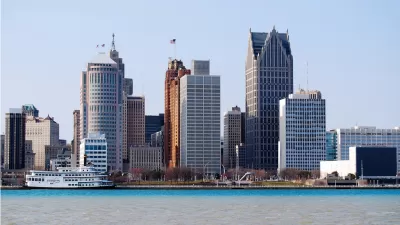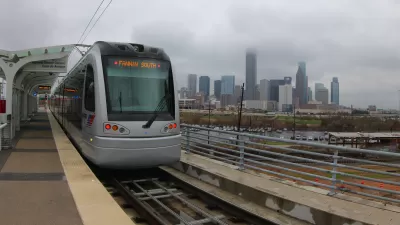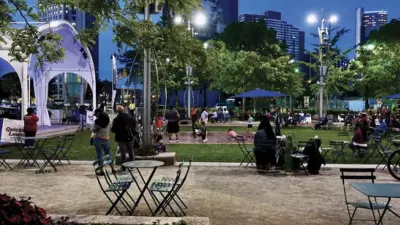Now is the time for cities to make strategic investments to scale up existing revitalization efforts.

"For 'legacy cities,' decades of economic decline have generally meant an array of ambitious revitalization plans are queued up but languishing, due to lack of funding and/or political will." Now, write Lavea Brachman and Eli Byerly-Duke, these cities have a chance to reinvigorate stagnant projects through federal funding from the American Rescue Plan (ARP). "Now is the moment for these cities to dust off their wish lists, activate their strategic playbooks to maximize the ARP funds, and line up implementation partners."
It has become clear that "the private sector alone cannot rescue these legacy places," but "the prospect of extensive public sector funds deployed alongside private sector investments and acting as a springboard for legacy cities and their regions is tantalizing." In cities that were already experiencing redevelopment before the COVID-19 pandemic, "local leaders can build on existing projects and initiatives" to regain momentum.
Meanwhile, "the opportunity to address equity issues in these cities and regions has never been greater." Targeted investments in low-income areas "can reinforce place-based initiatives already underway, such as East Side Avenues in Buffalo and the Strategic Neighborhood Fund in Detroit, catalyzed with state and local public investments and scaled with philanthropic funding." The authors highlight other examples of successful programs and projects in legacy cities that have made a positive impact and could be scaled up with increased funding and resources. "With the pie suddenly dramatically expanded, leaders can build on these pre-COVID projects by coalescing around priority-setting and sequencing of dollars deployed."
FULL STORY: Legacy cities can think big for transformative impact with ARP funds

Planetizen Federal Action Tracker
A weekly monitor of how Trump’s orders and actions are impacting planners and planning in America.

Congressman Proposes Bill to Rename DC Metro “Trump Train”
The Make Autorail Great Again Act would withhold federal funding to the system until the Washington Metropolitan Area Transit Authority (WMATA), rebrands as the Washington Metropolitan Authority for Greater Access (WMAGA).

DARTSpace Platform Streamlines Dallas TOD Application Process
The Dallas transit agency hopes a shorter permitting timeline will boost transit-oriented development around rail stations.

San Francisco's School District Spent $105M To Build Affordable Housing for Teachers — And That's Just the Beginning
SFUSD joins a growing list of school districts using their land holdings to address housing affordability challenges faced by their own employees.

Car-Centric LA Suburb Looks to a Train-Oriented Future
City leaders in Rancho Cucamonga, the future western terminus of the Brightline West rail line to Las Vegas, want to reimagine the city as a transit-oriented, pedestrian-friendly community.

New Alaska Bitcoin Mine Would Burn as Much Energy as the State’s Largest Coal Plant
Fueled by “stranded” natural gas, the startup hopes to become the largest in the US, and to make Alaska an industry center.
Urban Design for Planners 1: Software Tools
This six-course series explores essential urban design concepts using open source software and equips planners with the tools they need to participate fully in the urban design process.
Planning for Universal Design
Learn the tools for implementing Universal Design in planning regulations.
Municipality of Princeton
Roanoke Valley-Alleghany Regional Commission
City of Mt Shasta
City of Camden Redevelopment Agency
City of Astoria
Transportation Research & Education Center (TREC) at Portland State University
US High Speed Rail Association
City of Camden Redevelopment Agency
Municipality of Princeton (NJ)





























